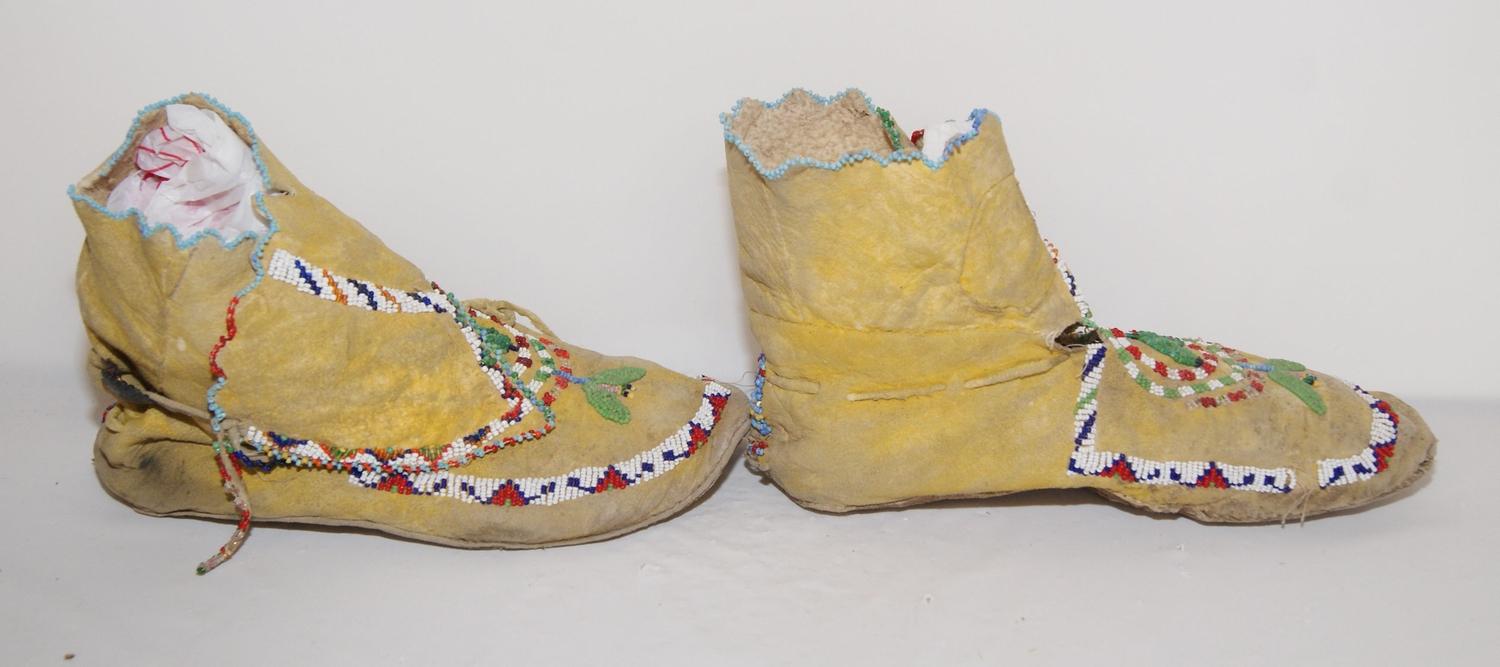This single strip of beading down the center of the moccasin is a recurring design element among the Ute mocs. This simple example would have been very practical for daily use. The soles could be replaced without interfering with the beading on the uppers.
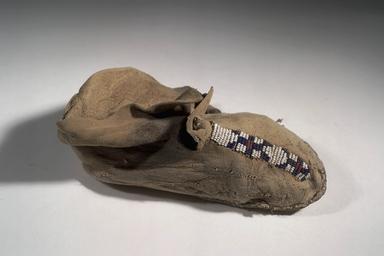
Chuck Burrows has lent his insight into the progression of beading among the Ute. His view is, Ute beading was geometric in nature initially because of quill-work technology. Later, the floral tradition of beadwork of the Red River Metis influenced the Ute's use of floral motifs. On the Res, full beading influenced by other domesticated tribes was adopted by the Ute as well. For some reason, I believe I've read eastern floral work, (very similar to Metis), spread across the north country from east to west with the ancestors, then down the Rockys to the area of the Ute. The Ute and the Shoshone were descendents of that northern tribal group. But for now, I will defer to Chuck's extensive research and assume early Ute beadwork was geometric in nature and floral designs were later influenced by the Metis. From many of the examples I've seen, I don't believe fully beaded moccasins were the norm among the Ute.
With that in mind, Chuck steered me to a Website where I have chosen examples of Ute beadwork I think would be appropriate for reproduction.
Here we have another common theme among Ute mocs. The beaded band down the center, and beading around the edge. Independent elements are interspersed within the areas defined by the main beading. This example is missing quite a bit of beading around the edge where the sole is sewn to the uppers.
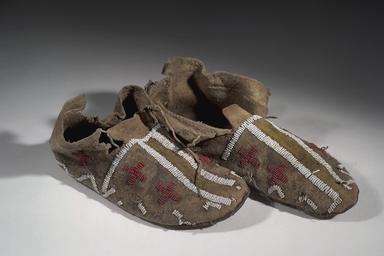
This is another, simpler, variation on this same design theme.
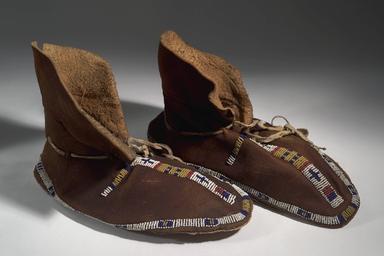
Another design feature that seemed to be characteristic of the Ute were simple stand-alone designs. This simple beaded rosette and band across the base of the tongue is a nice example. This would also be a very maintainable beading style for the active warrior.
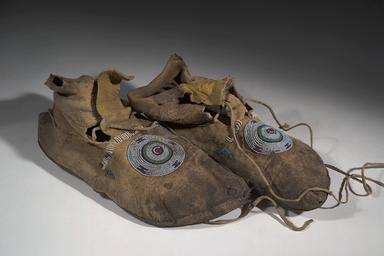
Another example of the simple stand-alone design feature. This time a cross with a narrow band across the base of the tongue.
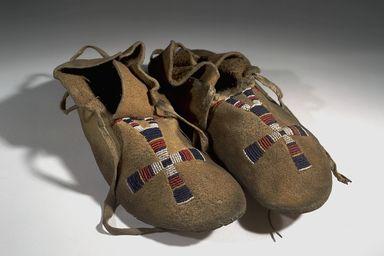
Again, we have simple design elements that are easy to maintain. They accent the mocs but don't turn them into ceremonial pieces to only be brought out on special occasions.
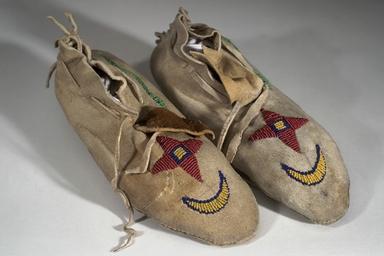
These are a more elaborate version of the beaded panel down the center, narrow band across the base of the tongue, and narrow band around the edge of the sole. These are most likely from a later period in my opinion.
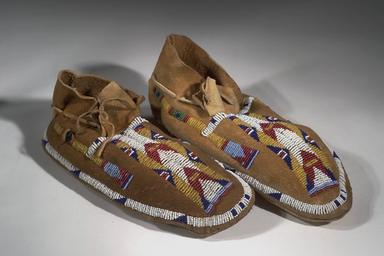
Still using the traditional motif, these moccasins are coming closer to being fully beaded, and again I would guess they are from a latter period.
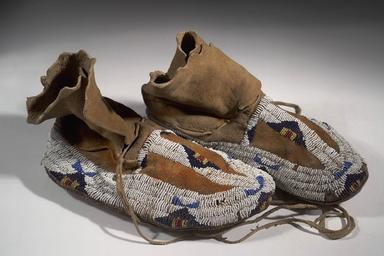
I think Chuck and I would agree, these Ute mocs show a marked Metis influence.
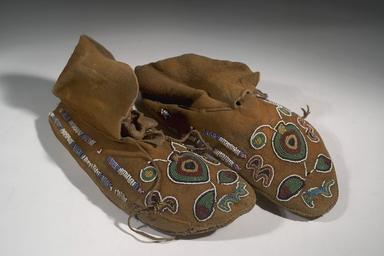
Here you have the modified floral design, but also the traditional Ute elements of the narrow band below the tongue, and the band around the sole. The use of colors to outline is very similar to the Metis traditions.
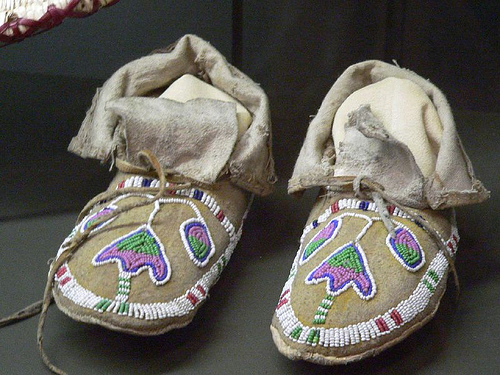
While you can't see much of the floral work in these photos, this has more in common in my mind with what I would consider traditional Ute floral work, combined with common design elements. Notice no outlining.
